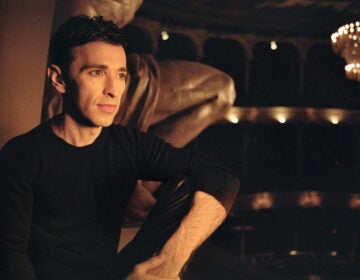An audio exhibit of not-so-quiet moments of silence
The curator at the Tyler School of Art, at Temple University, has been quietly doing research on the history and aesthetics of quiet. He will present five months of rotating “silences” in the galleries, starting with moments of recorded silence called to commemorate the attacks of Sept. 11, 2001.
The first documented call for a public moment of silence was in London on Nov. 11, 1919, Armistice Day (a.k.a. Remembrance Day, or Veterans Day). The idea was hatched by a journalist named Edward George Honey (aka Warren Foster).
He felt that a joyous celebration was not an appropriate way to remember World War I, so he proposed a five-minute period of silence. King George V liked the idea, but five minutes was too long to keep everybody hushed. His Highness shortened it to two minutes.
Even two minutes was a bit daunting. Newspaper accounts of the time show that the silence was rehearsed.
The curator at the Tyler School of Art has been quietly doing research on the history and aesthetics of quiet. He will present five months of rotating “silences” in the galleries, starting with moments of recorded silence called to commemorate the attacks of 9/11.
Of course, true silence is rare, if it exists at all.
The exhibition begins with a moment of silence recorded in New York City at a public event just days after the attack.
“It’s actually quite a loud silence,” said Robert Blackson. “Although it was meant to be a moment of silence, you can hear shh shh shh.”
Silence is no easy feat with hundreds, or thousands present. Public moments of silence are easily shattered, requiring trust in all who are present to abide. Silence is fragile, ruined by a single voice or a cough, a movement or a dropped object.
“When we have a moment of silence, we’re trying to communicate with something that’s beyond us. That may not be human,” said Blackson. “That punctuation of a bird, or a cough, reminds that we are human. We wish to have this moment of communal silence, but like so many things it’s never quite within our reach.”
The program also includes a moment of silence called in the middle of a Backstreet Boys concert. The band lost a crew member in the attacks on 9/11. Although the sound is filled with the hum of electronics and the shuffling of thousands of feet, not a peep was heard from the audience—amazing, considering it was most likely made up of young people there to have a good time.
Silence as a test of democracy
“It’s a moment of solidarity,” said Blackson, who describes public silence as a test of democracy. “When we are brought together in a silence, as a moment of silence, it takes all of us to participate in that.”
The program also includes private silences, recorded by people alone in their homes as tributes to lost loved ones, and posted online as YouTube videos.
“When I’m listening to those silences, of people in their bedrooms, where you really feel that this is their time,” said Blackson. “That is their silence.”
The 9/11 silences can be heard in the galleries at Temple throughout September concurrent with visual exhibitions on the walls. In October, Blackson will install the next set of silences–ones recorded by Alexander Graham Bell on wax cylinders.
The inventor, whose mother and wife were both deaf, struggled to find true silence. The primitive recording equipment he used created a symphony of pops and scratches that betrayed his quest for quiet.
WHYY is your source for fact-based, in-depth journalism and information. As a nonprofit organization, we rely on financial support from readers like you. Please give today.




